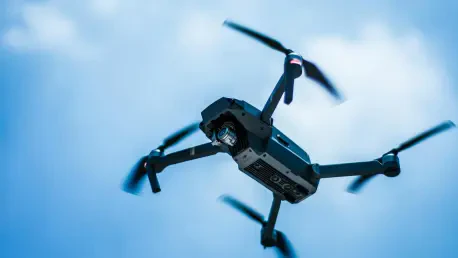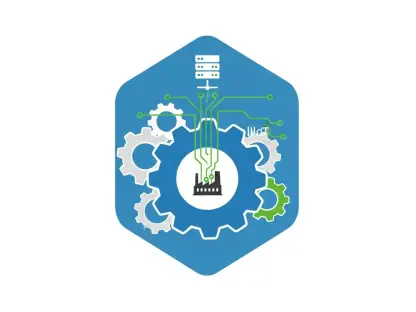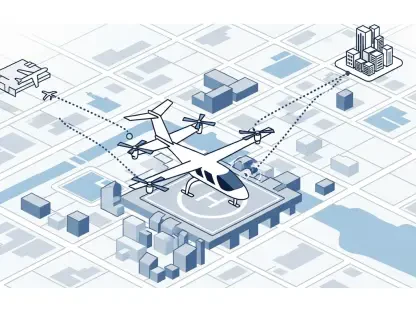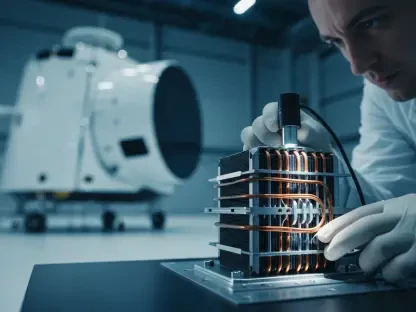In a transformative move for the technology sector, the Indian government has recently slashed the Goods and Services Tax (GST) on commercial drones from 18% to 5%, alongside offering exemptions for military drones and critical components like high-performance batteries. This policy shift is generating significant buzz among industry stakeholders who see it as a game-changer for the drone ecosystem. With reduced costs expected to lower prices by 10-15%, drones are becoming more accessible to diverse users, from small-scale farmers to defense operatives. Beyond affordability, the financial relief is poised to fuel innovation by allowing startups to redirect savings into research and development. This development signals a broader recognition of drones as both an economic driver and a strategic asset, setting the stage for a dynamic expansion of applications across multiple sectors. The ripple effects of this decision promise to reshape the landscape of drone technology in India.
Financial Relief and Market Accessibility
The reduction in GST rates is delivering a substantial financial reprieve to the drone industry, making these devices more affordable for a wider audience. For example, a commercial drone previously priced at ₹10 lakh saw a tax burden of ₹1.8 lakh, which has now dropped dramatically to just ₹50,000, resulting in a saving of ₹1.3 lakh per unit. This translates to a significant cost reduction for end users, particularly small and medium-scale farmers who rely on drones for precision agriculture. Similarly, high-performance batteries, essential for drone operations and often costing between ₹80,000 and ₹1.2 lakh, have seen their tax load lighten, easing the financial strain on service providers. Such savings are expected to lower the capital expenditure required to enter the market, enabling smaller players to compete and expand their reach. This democratization of access is a critical step toward integrating drone technology into everyday applications, fostering a more inclusive market environment.
Beyond the immediate price cuts, the lowered GST is anticipated to accelerate market growth by stimulating demand across various sectors. As acquisition costs decrease, drone service providers can achieve breakeven points more quickly, encouraging more entrepreneurs to invest in this technology. The affordability factor is particularly impactful in agriculture, where drones are increasingly used for crop monitoring and spraying, but it also extends to areas like logistics and surveillance. Industry experts predict that this surge in demand will create a virtuous cycle, where increased sales lead to higher revenues, which can then be reinvested into scaling operations. The broader accessibility also means that rural and underserved regions can now adopt drone solutions, bridging technological gaps and enhancing productivity. This policy is not just about cost savings; it’s about opening doors to new users and applications, fundamentally transforming how drones are perceived and utilized in the Indian context.
Fueling Innovation Through R&D Investment
One of the most promising outcomes of the GST cut is the opportunity for drone startups to channel their financial savings into research and development (R&D). With reduced tax burdens freeing up capital, companies are now better positioned to invest in enhancing drone capabilities, such as longer flight times, improved payload capacities, and advanced imaging systems. This focus on innovation is crucial for maintaining a competitive edge in a rapidly evolving global market. Startups, in particular, stand to benefit as they can allocate resources to experiment with cutting-edge technologies that could redefine industry standards. The emphasis on R&D also aligns with the growing need for customized solutions tailored to specific sectors like agriculture, disaster management, and defense. By fostering a culture of innovation, the tax reduction is laying the groundwork for breakthroughs that could position India as a leader in drone technology.
Moreover, the redirection of funds into R&D is expected to have a cascading effect on the entire drone ecosystem. As companies develop more sophisticated and efficient drones, they attract partnerships and investments that further amplify growth. This cycle of innovation and investment is vital for addressing the unique challenges faced by different industries, such as developing drones capable of operating in harsh weather conditions for disaster response or creating stealth models for military use. Industry leaders have expressed optimism that these advancements will not only improve the functionality of drones but also expand their applicability to emerging fields. The financial breathing room provided by the GST cut thus serves as a catalyst, encouraging a forward-thinking approach that prioritizes long-term technological progress over short-term gains. This strategic focus on R&D underscores the transformative potential of the policy shift for the sector.
Expanding Strategic and Economic Horizons
The GST reduction is also unlocking new markets and applications, reinforcing the strategic and economic importance of drones in India. With costs becoming more manageable, sectors beyond agriculture—such as defense, surveillance, and logistics—are witnessing a surge in drone adoption. Military drones, now exempt from GST, are set to play a pivotal role in national security, with enhanced affordability enabling faster deployment of advanced systems. Similarly, the commercial sector is exploring innovative uses, from last-mile delivery in urban areas to monitoring infrastructure projects in remote regions. This expansion into diverse fields is a testament to the versatility of drone technology and its capacity to address multifaceted challenges. The policy change is thus not merely a financial adjustment but a strategic enabler, broadening the scope of drone applications and solidifying their relevance across critical domains.
Additionally, the consensus among industry stakeholders, including bodies like the Drone Federation of India, highlights the long-overdue nature of this tax revision. Previous inconsistencies in GST rates had inflated costs, stifling growth and limiting the industry’s potential. The current reduction corrects these past hurdles, creating a more competitive market environment that encourages both domestic and international collaboration. This shift is expected to draw significant investments into the drone ecosystem, fostering job creation and technological advancements. As new markets emerge and existing ones expand, the economic ripple effects are substantial, contributing to GDP growth and enhancing India’s global standing in the drone industry. The strategic alignment of this policy with national priorities ensures that drones are recognized not just as tools of convenience but as integral components of economic and security frameworks.
Reflecting on a Transformative Policy Shift
Looking back, the decision to slash GST rates on drones marked a turning point for the industry, addressing longstanding cost barriers that had hindered progress. The immediate impact of reduced prices broadened access, while the redirection of savings into research and development spurred technological advancements that redefined possibilities. New markets emerged, and strategic applications in defense and beyond gained momentum, reflecting a holistic growth trajectory. As the drone ecosystem evolved, the policy proved to be a catalyst for both economic and innovative strides. Moving forward, stakeholders must continue to build on this foundation by advocating for supportive regulations and fostering collaborations that sustain this momentum. Ensuring that infrastructure and training keep pace with technological growth will be essential to maximizing the benefits of this historic shift, paving the way for a future where drones are seamlessly integrated into India’s developmental fabric.









